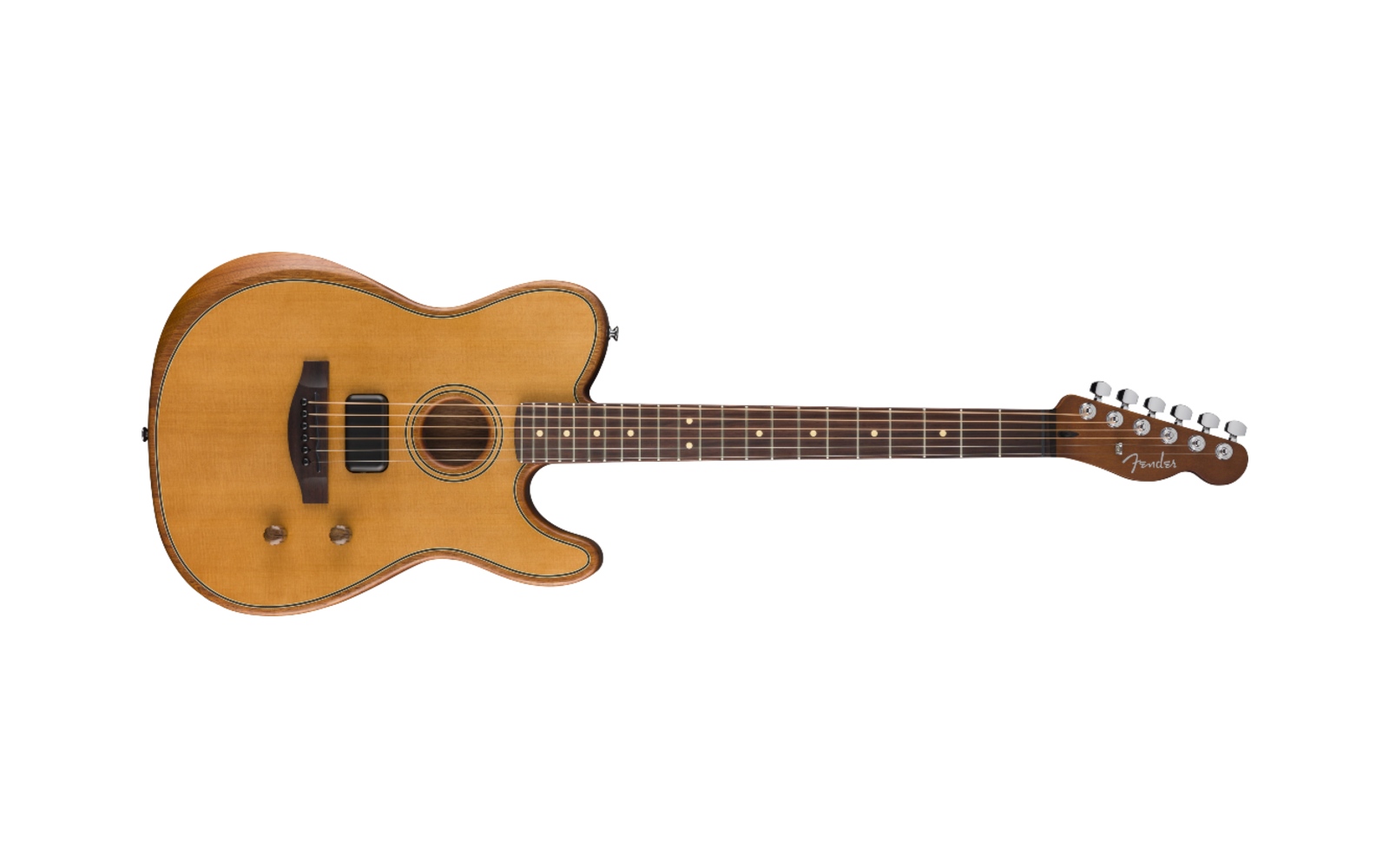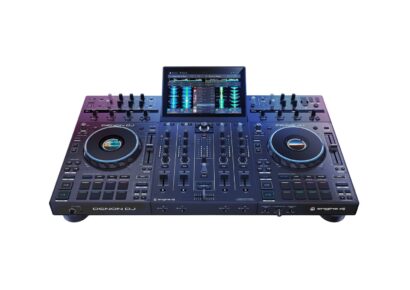Fender Acoustasonic Standard Telecaster | Fender Music Australia | RRP: $1099
The 2025 re-launch of the Fender Standard range of guitars sees the return of a dark horse. Love it or hate it, the Acoustasonic guitar crosses every boundary and smashes every rule you thought existed when it comes to “acoustic-electric” guitars. Ironically, the Acoustasonic is neither. It truly is its own thing, and it demands to be treated as such. So before you go jumping to any conclusions, I encourage you to take a step back, open your mind, and see with your ears. You might just come away pleasantly surprised.
I’ve been noodling away on an Acoustasonic Standard Telecaster for just over a week now. Every time I pick it up, it evokes a different mood in me. The resonance of the Sitka spruce topped, fully chambered body is so unique that you can achieve sounds that mimic parlour acoustic, banjo, ukelele, or even a gosh darn lute, depending on right hand playing style, pick attack, and even the position of your left hand on the fretboard. The instrument has such a rich response to playing dynamics and is so saturated with character that you could go a lifetime without plugging it in and continue discovering new voicings well into your twilight years.
Catch up on all the latest music gear reviews here.
Announced at NAMM 2025, the Fender Acoustasonic Standard Telecaster comes in Black, Honey Burst and a warm, inviting Aged Natural finish that made me yearn for a pine-swaddled campground to fill with dulcet strumming.
Things get really interesting when you delve into the electronics. There are two pickups in the Acoustasonic. The first and most obvious is the humbucking bridge pickup—designed by Fender legend Tim Shaw—that sits between the bridge and the soundhole. The purpose of this pickup is to produce tones that are consistent with what you’d get out of a fully electric guitar. The second pickup is invisible to the naked eye unless you know where to look. The guitar features a Fishman undersaddle pickup to handle the ‘Acousta’ part of the Acoustasonic. This brings the resonance of the body into play, by treating the entire instrument as a system that works with the pickups to produce the best possible sound.
Fender Acoustasonic
While the American and Player series Acoustasonic guitars are fitted with tone switches, you won’t find one on the Acoustasonic Standard. Fender VP Billy Martinez has explained that the intention behind the lack of a tone switch was to present the Acoustasonic Standard as a more stage-ready or performance ready instrument. There are two knobs: master volume, and a blending tone pot. The tone pot allows you to blend the outputs from each respective pickup by controlling the volume of both at the same time. With the tone pot all the way up, the saddle pickup is at max output and the humbucker in the bridge is off. This is your full acoustic setting. As you roll the tone pot back, the volume of the saddle pickup starts to drop off while the humbucker comes up. With the tone pot all the way back to zero, you’re only hearing the output from the bridge pickup – this is your full electric sound.
The magic is in the in-between tones, where you can achieve this incredibly unique sound that is both electric and acoustic but also neither at the same time; it’s something else, something mysterious and undefined and exciting.
You might look at the sound hole smack bang in the middle of the telecaster body and assume that sitting with the Acoustasonic might feel like trying to pat your head and rub your stomach at the same time. But as soon as you start playing, you’ll discover that it feels like the best parts of both worlds. It has the thin profile of an electric, a familiar Telecaster shape, access to pickup control under the right hand, but with the more gritty, tactile feel of an acoustic under the left hand thanks to the acoustic strings (including a wound 3rd) and the wood finish.
The Fender tuning pegs and classic Telecaster headstock carry the hybrid electric feel beyond the 22-fret bolt-on neck. Both the fretboard and bridge are rosewood, and access to the truss rod adjustment is in the headstock, just above the nut. Access to the internal electronics and the battery is in the rear of the guitar. Previous iterations of the Acoustasonic were touted to go for up to twenty-two hours of play time before needing a battery change, so we can assume this iteration will be comparable. Yes, there are strap-buttons installed, so you’re ready to start gigging right out of the box. Probably the most bespoke detail on the whole instrument is the pair of control knobs, which are made out of notched and carved pieces of wood, complementing the organic, craftsman vibe that oozes out of this remarkable piece of equipment. Finally, every Acoustasonic Standard comes with a Boveda 2-way humidity control starter kit that straps on around the strings and protects your instrument from body cracks, bridge separation, rust, mildew and fret-raise.
If you’ve been looking for a unique instrument that straddles the line between acoustic and electric, look no further. The Acoustasonic Standard also comes in a Jazzmaster model and is available now.
For local Fender enquiries, keep reading at Fender Australia.

